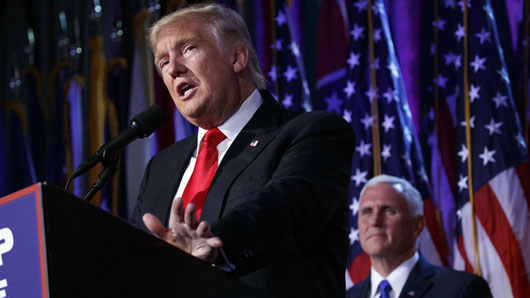by WorldTribune Staff, December 25, 2017
Christian conservatives overwhelmingly voted for Donald Trump over Hillary Clinton, turning the tide in key swing states and delivering Trump to the White House, according to the author of the new book “The Day Christians Changed America”.
“When all the hyperbole is stripped away, and the countless actors who played minor roles are done pontificating about how it was they who shaped the November [2016] outcome, the empirical evidence shows that it was Christian conservatives – especially an unheralded group known as SAGE Cons [an acronym for Spiritually Active, Governance Engaged Conservatives] – who pushed the Trump-Pence tandem to the top of the mountain,” said the author, Dr. George Barna, a leading researcher on the intersection of faith, culture, and politics.

According to Barna, SAGE Cons, while constituting ten percent of all voters, cast their ballots for Donald Trump over Hillary Clinton by a 93 percent to one percent margin, and were key for Trump winning in Pennsylvania, Michigan, Wisconsin, Florida, and North Carolina.
“Perhaps Trump was chosen by God for such a time as this,” Barna wrote.
“Perhaps the Lord saw in this crass man a person whose backbone, love of conflict, courage, stubbornness, and occasional ruthlessness would be used by Him to turn around the federal government and its self-serving system. Honestly, as much as I like and appreciate the evangelicals who were in the [presidential] race and believe their godly character would serve the nation well, the task of regenerating the heartbeat of the system may require a ‘wrecking ball’ like Donald Trump.”
Of the “often lazy” media, Barna noted that “rather than dig for the truth, they sometimes settle for the way things appear. Sadly, because the audience often does not know any better, those lazy narratives become an established reality in the minds of the public.”
Barna added: “The perception of ‘evangelicals’ is one such example. Based on simplistic and misleading survey techniques, the media polls consistently claim that about 30% to 35% of the population is born again or evangelical – about one of every three adults. That figure is based on people identifying as such. Such surveys make no distinction between a ‘born again’ and ‘evangelical’ Christian, assuming those are synonyms for the same condition.”
Barna says voters in the 2016 presidential election fit into six different faith segments:
- Ten percent were SAGE Cons, who had a 91 percent turnout rate and voted for Trump over Clinton by a 93 percent to one percent margin.
- Seven percent were evangelicals, who had a 61 percent turnout rate and voted for Trump over Clinton by a 79 percent to 18 percent margin.
- 24 percent were non-evangelical born again Christians, who had a 58 percent turnout rate and voted for Trump over Clinton by a 56 percent to 35 percent margin.
- 43 percent were notional Christians, who had a 59 percent turnout rate and voted for Trump over Clinton by a 49 percent to 47 percent margin.
- Five percent were non-Christian faith, who had a 57 percent turnout rate and voted for Clinton over Trump by a 71 percent to 20 percent margin.
- 21 percent were skeptics, who had a 57 percent turnout rate and voted for Clinton over Trump by a 60 percent to 27 percent margin.
A key turning point in the 2016 campaign, Barna argues, came in June when a non-profit group called United in Purpose and another group, My Faith Votes, organized a meeting between Trump and about 1,000 pastors held in New York City at the Marquis Marriott in Manhattan, billed as “A Conversation about America’s Future.”
“The event was proclaimed to be for those who had not yet made up their mind if they were for or against Trump. The purpose was to help those who were on the fence to gain clarity. Conservative Christian leaders who had already declared themselves to be pro-Trump or anti-Trump were asked to stay home,” Barna wrote.
“During the course of those two hours, the mood in the room had changed from doubt and skepticism to optimism and hope. Not everyone in the hall was persuaded that Trump was worthy of their support – but enough of them were convinced that most of those who were not would eventually come around. Donald Trump was clearly no evangelical – but he now understood their concerns and was seemingly on board with the direction they wished to move American social policy.”
The results of the meeting were immediately seen in the voting behavior of SAGE Cons who were influenced by the pastors in attendance, Barna said.
Polling by the American Culture & Faith Institute in May 2016, the month before the meeting, showed that 76 percent of SAGE Cons planned to vote for Trump. By July, that number increased to 81 percent. It reached 86 percent in September, 88 percent in October, and 93 percent on election day.
Looking forward to 2020, Barna notes that “If President Trump truly sets his mind on cleaning house in the fetid swamp that has become our nation’s capital, then God may have specifically chosen him for that task – an undertaking that some of the faith-driven candidates would not have been equipped to handle.”
Subscribe to Geostrategy-Direct __________ Support Free Press Foundation
